Changing the start page (the one that is loaded when the browser is started) of Mozilla Firefox allows you to customize your web browsing session. Regardless of the reason for changing your browser home page, this is usually a quick and very simple procedure. If your changes fail, you can refer to the last section of this guide to troubleshoot any virus and malware related issues.
Steps
Method 1 of 4: Using the Mouse (Computer)

Step 1. Launch Firefox
To do this, double-click the Firefox icon on your computer desktop.

Step 2. Go to the desired web page
Open a new browser tab and connect to the web page you want to use as your new Firefox start page.
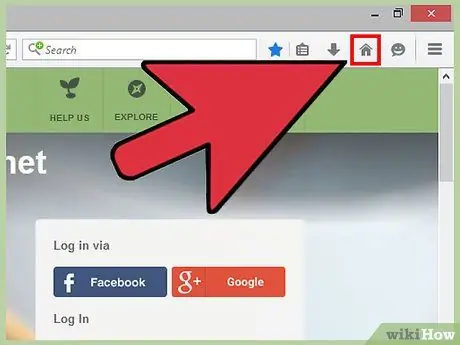
Step 3. Now drag the tab to the "Home" button (it features a stylized house)
To do this, click with the mouse on the name of the tab, then, without releasing the left button, drag it onto the "Home" button.
- The tab is located at the top of the Firefox window and is characterized by the icon and title of the page displayed.
- Normally the "Home" button is located to the right or below the address bar. If you can't find it, right-click (on Mac hold down the "control" key while clicking) the empty space next to the name of any browser tab. Choose the Customize option from the menu that appears, then look for the "Home" icon and drag it to any of the toolbars.
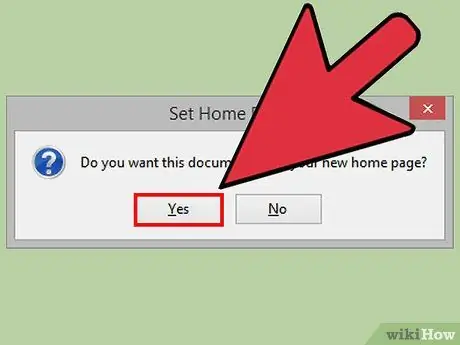
Step 4. Confirm your action
A pop-up window will appear asking you to confirm your willingness to change the start page. To do this, simply press the Yes button.
If that doesn't work, try using the "Preferences" menu as described in the next method
Method 2 of 4: Using the Preferences Menu (Computer)
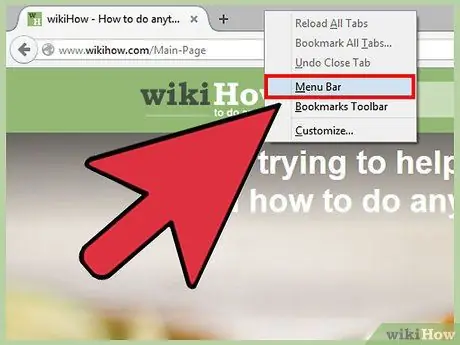
Step 1. Display the menu bar located at the top of the window
In some versions of Windows, the menu bar is not displayed by default. To make it visible, use one of the following methods (chances are you will need to try more than one):
- Press the Alt key.
- Press the F10 function key.
- Select with the right mouse button an empty point near the name of the browser tab, then choose the Menu bar item from the context menu that appears.
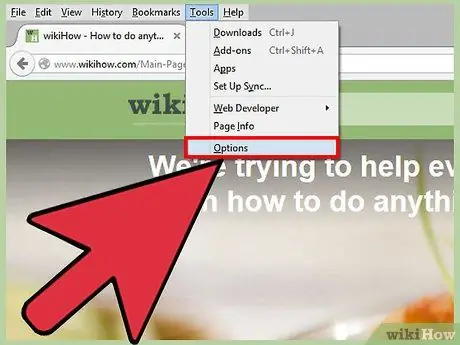
Step 2. Access the "Firefox" menu, then choose the "Preferences" item
Click on the word Firefox available on the menu bar, then choose the Preferences option from the drop-down menu that appeared. A new pop-up window or a new browser tab should open containing your Firefox preferences.
In some versions of Firefox, the "Preferences" option is replaced by the "Options" item

Step 3. Configure Firefox to display the start page on startup
Go to the "Preferences" tab, then look for the "When Firefox starts:" drop-down menu. Open the menu and select the item Show home page.
In the absence of this option, select the General tab of the "Preferences" window
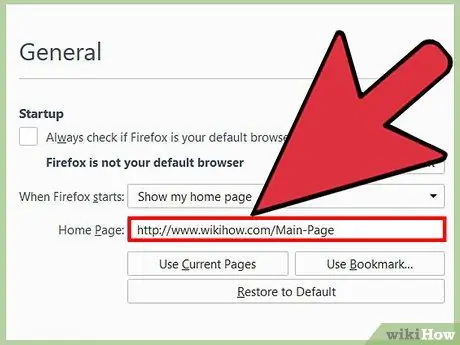
Step 4. Edit the home page
Immediately below the "When Firefox starts:" drop-down menu, the "Start page:" text field should be available. To set the start page, there are several methods:
- You can type the URL of the desired web page into the text field in question. If you want multiple web pages to open at the same time, separate their addresses with the pipe symbol "|".
- Press the button Use current pages, this way all the tabs currently open will be displayed every time Firefox starts.
- Press the Use a Bookmark … button to use one of your favorites as your Firefox start page.
- Press the Reset to Default Page button to reset Firefox's default home page.
Method 3 of 4: Change the Home Page on Android Devices
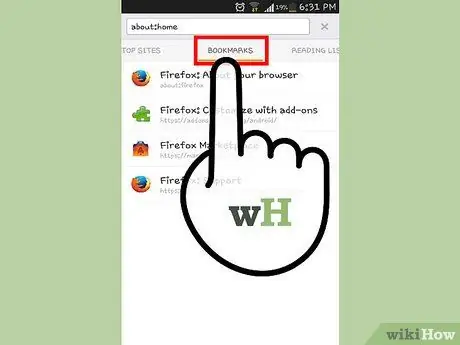
Step 1. Go to the Firefox start page
On Android devices, this is a page that shows a grid of previews of the websites you visit most frequently. To view this page, touch the title bar of the window, choose the Bookmarks option, then select the Firefox Start item.
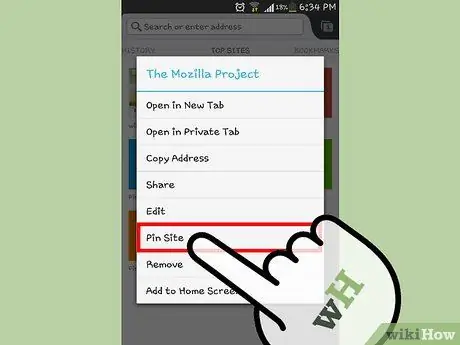
Step 2. Block a site on the Firefox start page
Access the browser home page as seen in the previous step, then press and hold your finger on the thumbnail of the site you want to add; finally choose the Block site option from the context menu that appeared.
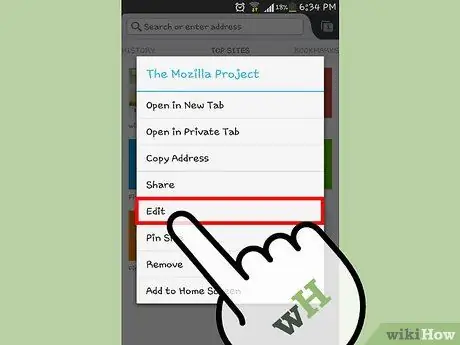
Step 3. Add a new site to the home page
If the website you want to anchor on the Firefox start page does not appear among the previews available in the grid, press and hold your finger on one of the ones you want to remove. From the contextual menu that appeared, choose the Edit item, then type the URL of the site you want to add; alternatively you can select it from your favorites or from the list of the most visited ones.
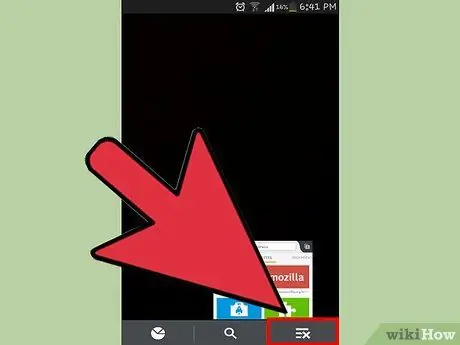
Step 4. At the end of each browsing session, close the application
If the Firefox application is not closed properly it will continue to remain active in the background. If the next time you use Firefox you want to be able to view the home page with the list of your favorite sites, select the icon to access the main application menu and choose the Exit option.
Method 4 of 4: Delete a Malware (Computer)
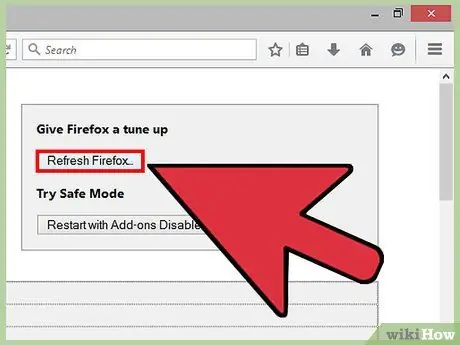
Step 1. Reset Firefox
If the Firefox start page currently set displays an advertisement, contrary to your will, the advice is to perform the browser reset procedure. Note: This eliminates all installed extensions and add-ons. Conversely, personal saved passwords and bookmarks will not be touched.
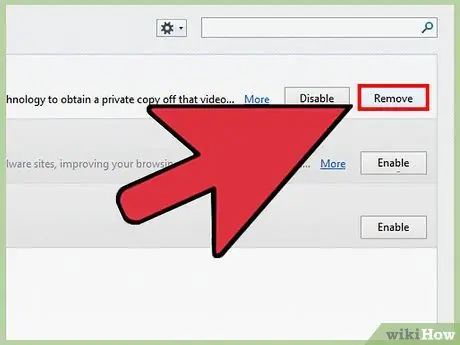
Step 2. Delete a potentially harmful add-on
Some add-ons are able to independently modify the home page of the browser also preventing you from making any changes. If you don't want to reset Firefox, here's another way to try and fix the problem:
- Access the Firefox main menu (press the button with three horizontal lines).
- Choose the item Add-ons.
- Press the Delete button next to the suspicious component you want to remove.
- When finished, restart Firefox.
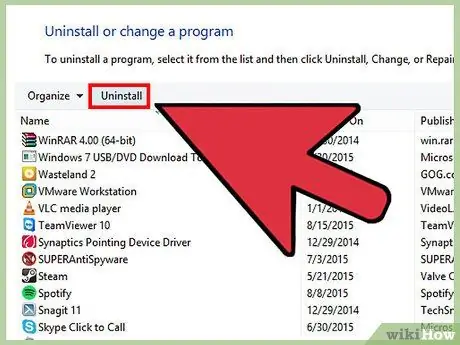
Step 3. Remove the Babylon start page
Babylon is a translator that, after installation, modifies the browser start page and other settings without giving you the possibility to reset them. To uninstall this program, follow these instructions.
- Windows systems: access the "Control Panel", then select the Uninstall a program item. Press the Uninstall button next to the "Babylon" program, then follow the instructions that appear on the screen. Repeat this step for the following software (if any): "Babylon Toolbar", "Browser Manager" and "Browser Protection". At this point, proceed by eliminating all Firefox add-ons related to the "Babylon" program. To do this, follow the instructions in the previous step.
- Mac: Find "Babylon" in your "Applications" folder. Drag its icon into the system trash. At this point, access the Finder menu and choose the Empty Trash option. Proceed by eliminating all Firefox add-ons related to the "Babylon" program. To do this, follow the instructions in the previous step.
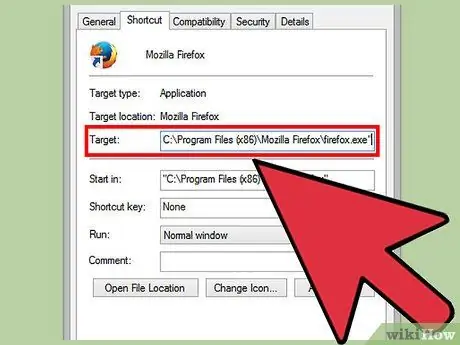
Step 4. Change the Firefox settings (for Windows systems only)
If the browser continues to redirect you to a home page that you have not chosen, right-click the Firefox icon on the desktop, then choose Properties from the context menu that appears. Look for the "Destination" field in the "Properties" window, then look at the bottom of its content. If there is a URL in the text field in question, delete it together with the quotation marks that delimit it. Do not delete any other part of the contents of the "Destination" field.
- Using multiple Firefox shortcuts or multiple icons on the taskbar, you will need to repeat the above step for each of them.
- To avoid the repetition of a similar event in the future, always press the "No" button when any program asks for consent to be able to change the settings of the internet browser.

Step 5. Delete a malware
If the problem persists, it is very likely that your computer is infected with malware that is interfering with the normal functioning of Firefox. These types of programs cannot be deleted via browser settings, but the following guide should help you find a solution to the problem.
Advice
- An alternative method is to open the browser tabs you want to set as your home page and then press the "Use current pages" button below the "Home page" text field.
- Make sure that the new start page pleases all users who share the use of the computer in question.






